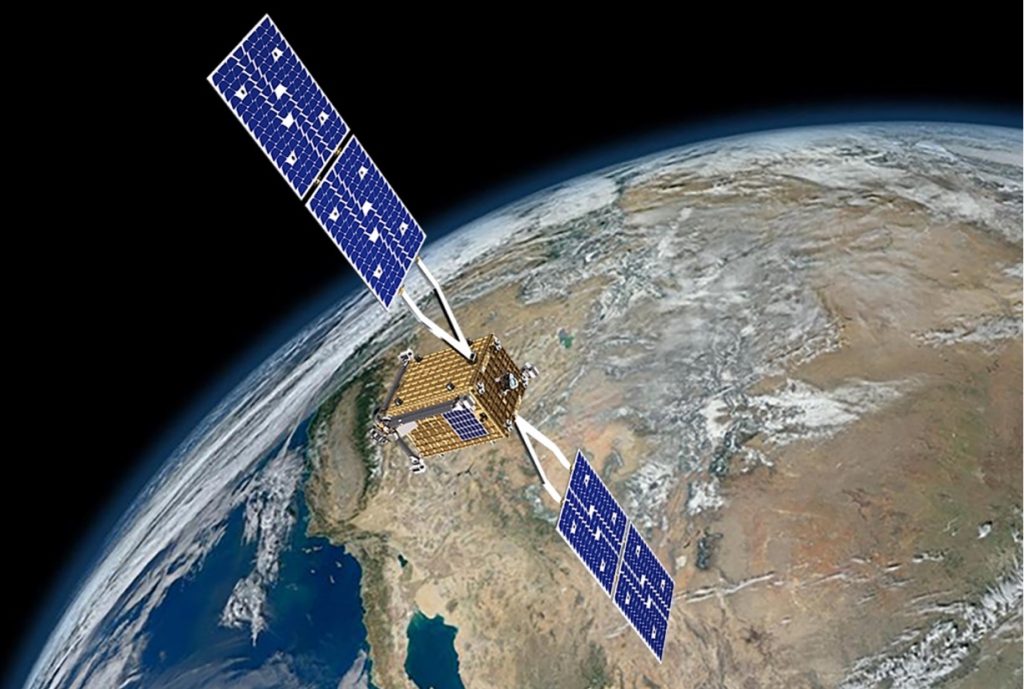Summarize this content to 2000 words in 6 paragraphs
An artist’s conception shows an Otter spacecraft in orbit. (Starfish Space Illustration)
Tukwila, Wash.-based Starfish Space today announced that it has raised $29 million to support the development of its first three Otter orbital servicing vehicles for missions serving the U.S. Space Force, NASA and Intelsat.
The investment round was led by Shield Capital, a San Francisco venture capital firm specializing in advanced technologies in fields ranging from space to cybersecurity and artificial intelligence. Other major participants in the round include new investors such as Point 72 Ventures, Booz Allen Ventures, Aero X Ventures, Trousdale Ventures and TRAC VC, plus existing investors such as Munich Re Ventures, Toyota Ventures, NFX and Industrious Ventures.
Initial word of the funding round came in September, in a regulatory filing and a GeekWire report. At the time, Starfish declined to comment on the investment or the investors. Today, Starfish co-founder Austin Link hailed the fresh infusion of capital in a news release.
“This new round of funding is a pivotal moment in the journey of Starfish Space, as it will allow us to launch the first Otter satellites to orbit,” Link said. “These first Otters will change what is possible when it comes to operating satellites in space. We are excited to partner with an outstanding group of investors to make these missions happen, and proud of the growing support we’ve received from existing investors as part of this round.”
Starfish’s Otter spacecraft is designed to rendezvous with satellites in orbit to inspect them and link up with them, either for servicing or for safe disposal. The system makes use of several innovative technologies, including Starfish’s Cetacean and Cephalopod navigation and docking software systems and the Nautilus orbital capture mechanism.
Link and Starfish’s other co-founder, Trevor Bennett, founded the company in 2019 after working at Jeff Bezos’ Blue Origin space venture. Since then, Starfish has built up its workforce to 70 employees and has raised a total of $50 million in venture capital funding, including the current investment round.
Last year, Starfish launched a scaled-down prototype known as Otter Pup for orbital testing. Although the test encountered a series of challenges, the results encouraged the Starfish team as well as investors.
“On-orbit satellite servicing is a critical evolution to unlock the next level of value for defense and commercial space,” Letitia “Tish” Long, newly appointed Starfish Board member and senior adviser at Shield Capital, said in today’s news release. “Austin, Trevor and the whole Starfish team have proven their ability to execute complex missions on orbit, and we are excited to be partnering with them as they deliver Otter for critical customer applications.”
Starfish has a $37.5 million contract with the U.S. Space Force to execute a first-of-its-kind mission that involves having the full-scale Otter dock with and maneuver national security assets in geostationary Earth orbit.
The company has also signed a contract with Intelsat to provide on-orbit life extension services to a geostationary satellite beginning in 2026, and has been put in charge of a $15 million NASA mission aimed at inspecting multiple U.S.-owned defunct satellites in orbit, beginning in 2027.
Those three missions will make use of the Otter spacecraft supported by the new funding round. Last month, Starfish won a study contract from the National Reconnaissance Office to look into further applications for Otter.














